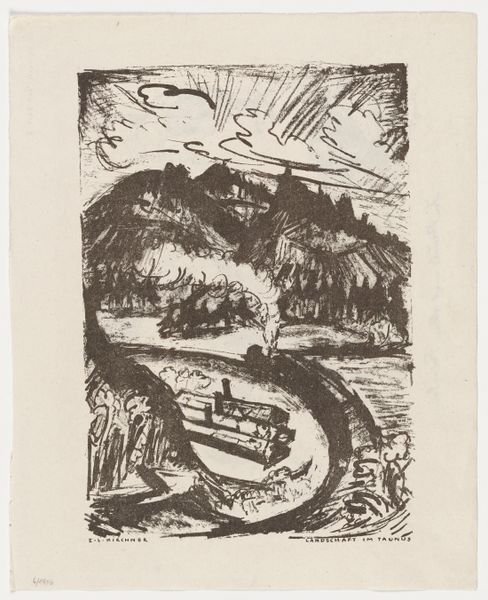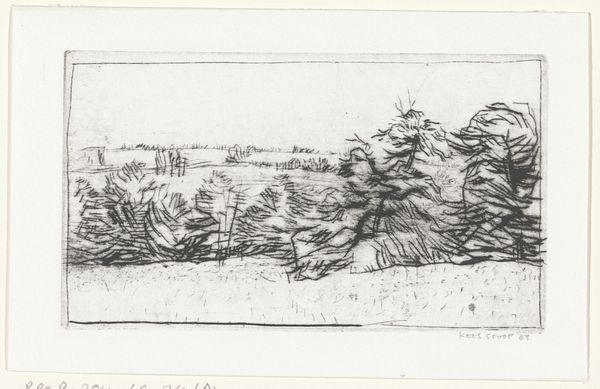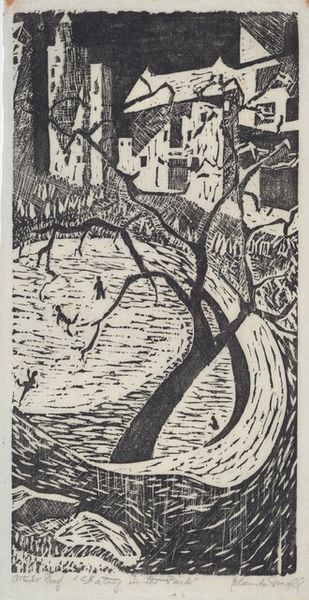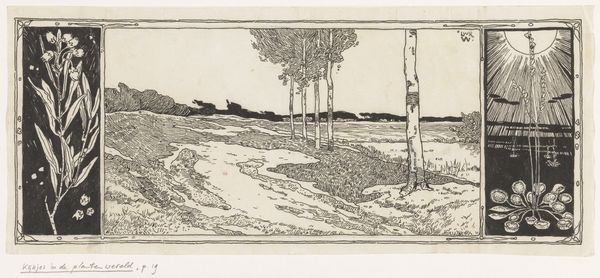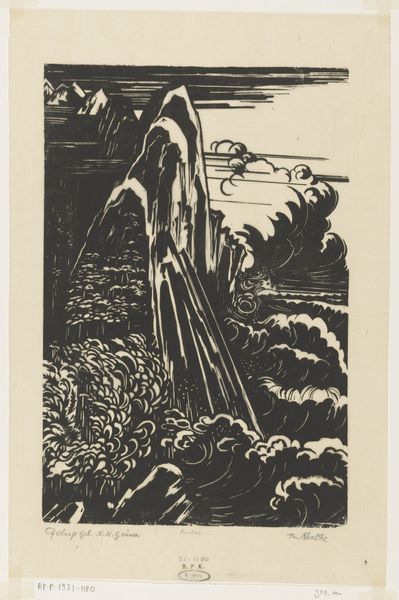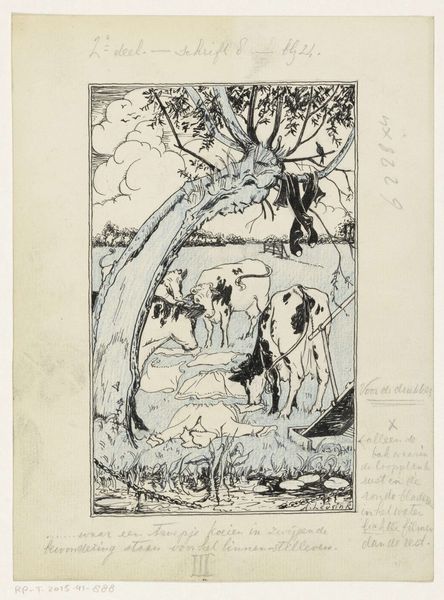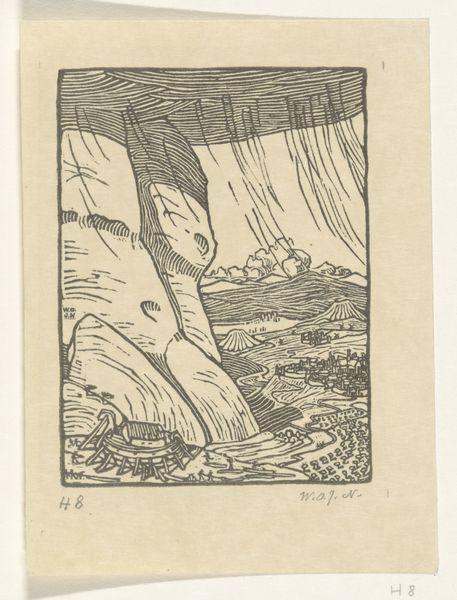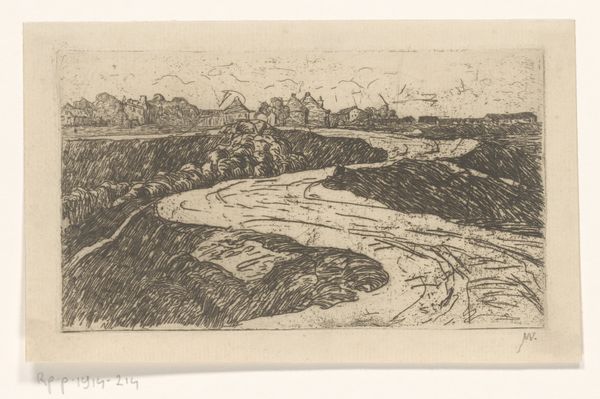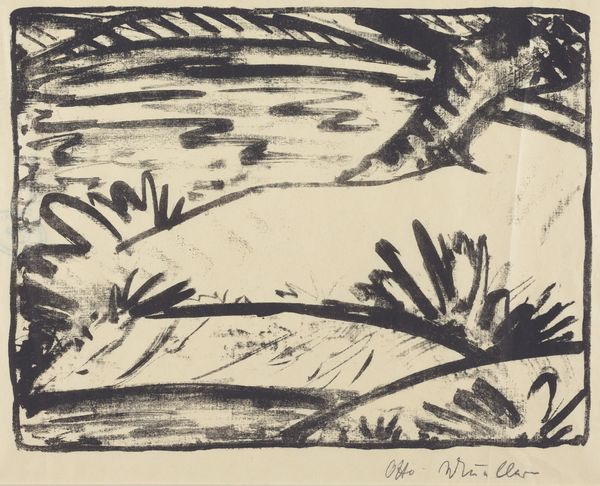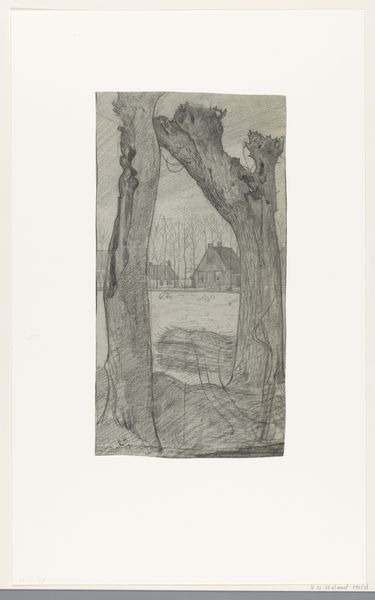
Near Ghent (Bei Gent) (recto) and Mountain Goats (Bergziegen) (verso) 1916
0:00
0:00
lithograph, print, woodcut
#
germany
#
lithograph
# print
#
landscape
#
german-expressionism
#
expressionism
#
woodcut
Dimensions: 13 13/16 × 10 15/16 in. (35.08 × 27.78 cm) (sheet)
Copyright: No Copyright - United States
Erich Heckel created this evocative landscape, "Near Ghent," using woodcut techniques. This isn't painting or sculpture, but printmaking, a medium with its own potent history. The stark, black lines carved into the wood block and then transferred to paper lend the scene its raw, expressive quality. Look at the way Heckel uses these lines: thick, bold strokes define the riverbank, while finer, more delicate marks suggest the bare branches of the trees. The woodcut process itself is important here. It’s a relatively direct, even brutal, method. You have to physically remove material to create the image. There’s no room for subtlety or blending. This directness is crucial to the Expressionist aesthetic, where emotions are laid bare. It also speaks to the social context. Printmaking was a democratic medium, allowing for wider distribution of art at a time of great social upheaval. This wasn’t art for the elite, but art for the people, carrying a message of change and immediacy.
Comments
minneapolisinstituteofart almost 2 years ago
⋮
In 1916, publisher Paul Cassirer started a new periodical, "Der Bildermann" [The Picture Man], "to bring a broad public directly in touch with art." It featured original lithographs that sought to offer beauty as a form of relief from the grinding brutality of World War I. Leo Kestenberg, a pianist and pacifist, ran the journal while Cassirer served in the army. Max Slevogt designed the vignette on the masthead, which shows a man peddling broadsheets to eager soldiers and civilians of all ages and stations. "Der Bildermann" embraced the art of impressionists (such as Max Slevogt), expressionists (Erich Heckel and Ernst Ludwig Kirchner), and naturalists (August Gaul). Dwindling subscriptions, increasing difficulties with censors and the bureaucracy, led to "Der Bildermann’s" demise after only eighteen issues.
Join the conversation
Join millions of artists and users on Artera today and experience the ultimate creative platform.
